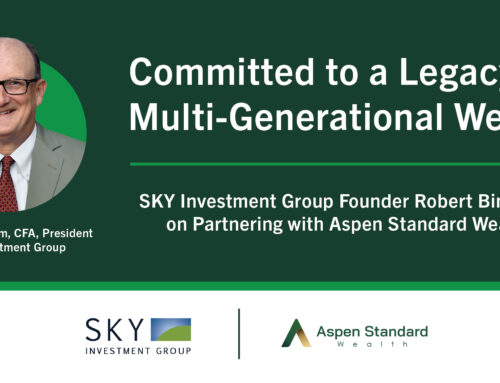By Justin Wells, Partner and Chief Revenue Officer
For many RIA leaders, succession planning is at the top of their list of priorities when exploring a potential partner. And for good reason. The average age of a financial advisor in the United States has climbed to 56,[1] with the likelihood that a significant number of advisors will retire in the near future. Couple that with a recent estimate from McKinsey that the wealth management industry could face a shortage of 90,000 to 110,000 advisors within the next decade,[2] and this demographic trend is enough to keep any RIA leader up at night.
In order for RIA leaders to feel confident that they can provide long-term stability for their clients and team members alike, a detailed and actionable succession plan is key.
The reality is many successful RIAs grow to the point where the founder is forced to wear multiple hats: business development, investment management, lead advisor, recruitment, etc. However, the next chapter of growth for an RIA typically requires the founder to increasingly prioritize a very different, and more focused, skillset. No matter how talented and experienced, no founder can do it all, indefinitely. Trying to do so will ultimately be to the detriment of the firm. A thoughtful succession plan is invaluable in handing off key responsibilities, such as hiring a president or CEO to lead the day-to-day operations of the business, developing a growth team, delegating the CIO role to a trusted employee, or transitioning client accounts to senior advisors.
The following are questions that RIA leaders should ask of themselves, and well as prospective partners, to ensure they are aligned and that together they have the resources and willingness to develop and act upon a sustainable succession plan:
- Where do you see your business 1/3/5/10 years from now? What are the specific goals you want to achieve, and what sort of staffing do you need to get there? How will you find and engage with prospective talent?
- How do you see your contribution to the firm changing over that time frame? How and when will you step back and begin to “hand over the reins”?
- If you plan to exit the business, what are the specific plans to address business leadership, investing, and client advisory services, among other key functions within the firm?
- Is there an executive leadership team in place to ensure the longevity, performance, and continued growth of the business? If not, who should be on that team?
At Aspen, we are committed to ensuring that the RIA owners we partner with feel confident that their hard-won legacy is secure, that their clients are taken care of for generations to come, and that their employees have solid career paths long into the future. It’s just smart business … and, more importantly, the right thing to do.
Contact us to learn how Aspen can help you with succession planning.
[1] https://www.cerulli.com/press-releases/the-financial-advisor-industry-has-a-headcount-problem#:~:text=Meanwhile%2C%20the%20rookie%20failure%20rate,timeline%20of%20a%20financial%20advisor.
[2] https://www.mckinsey.com/industries/financial-services/our-insights/the-looming-advisor-shortage-in-us-wealth-management




